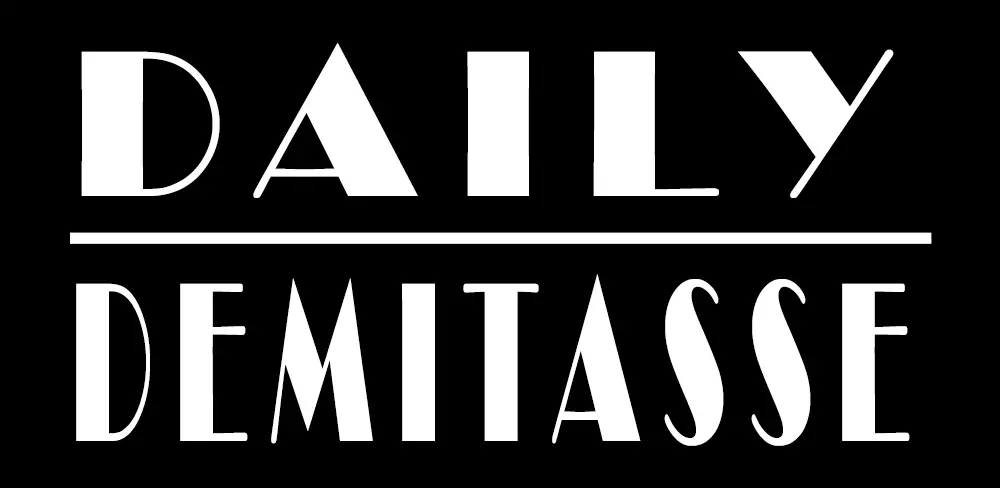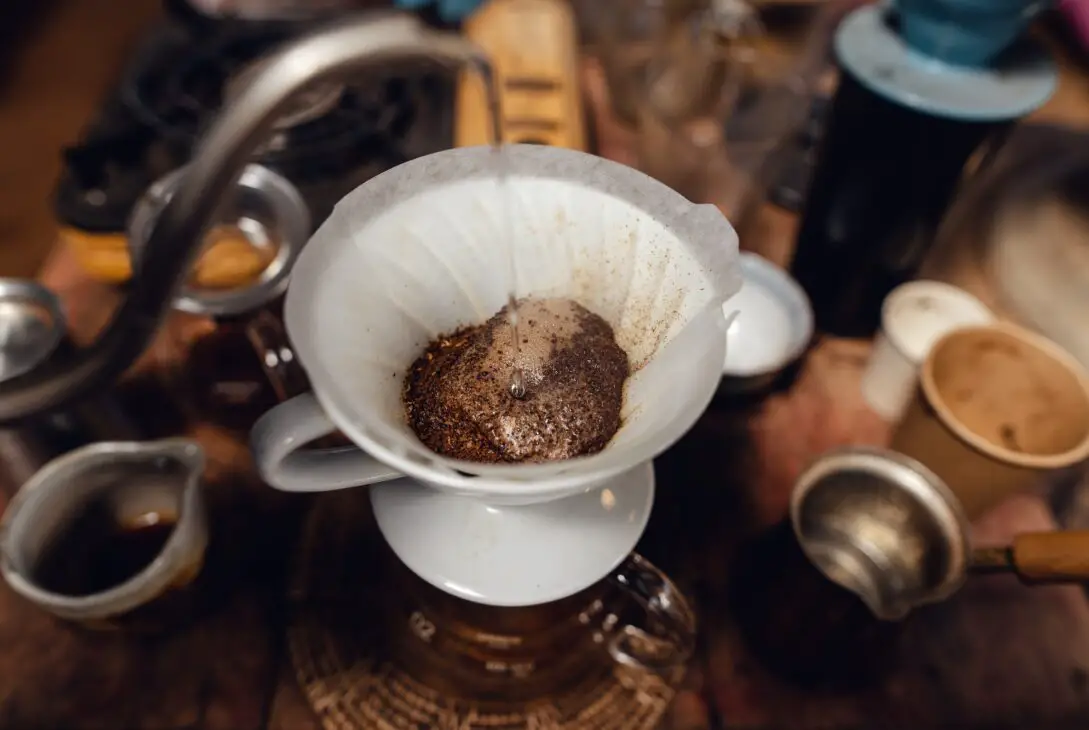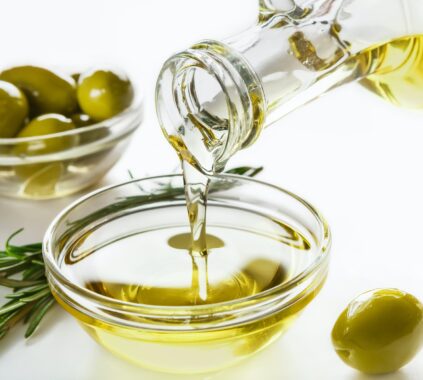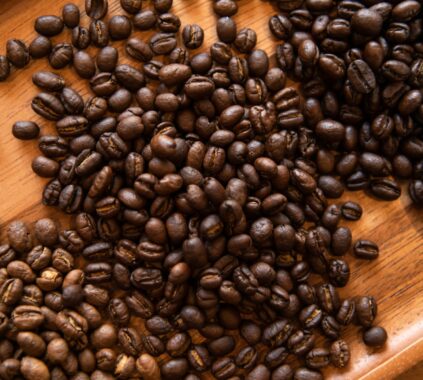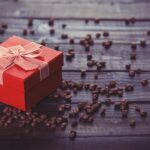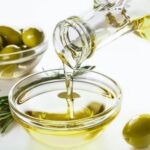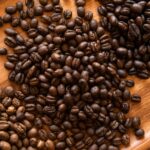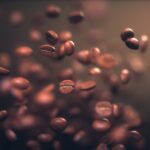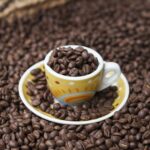Hello, fellow coffee aficionados! Are you ready to dive into the mysterious and captivating world of coffee bloom? That’s right; today, we’re embarking on a journey to understand the science behind that magical moment when hot water meets freshly ground coffee, and the brew’s vibrant, complex flavors are unleashed.
Table of Contents
The Coffee Bloom: A Magical Moment in Brewing
Picture this: you’ve just woken up, and you’re brewing your first cup of coffee for the day. As you pour hot water over the freshly ground coffee, you notice a frothy, bubbling reaction – that, my friend, is the coffee bloom. This delightful phenomenon is a sign of freshness and plays a crucial role in developing the flavors of your cup of joe.
To truly appreciate the coffee bloom, we need to go back to the origin of coffee and understand the roasting process. When coffee beans are roasted, carbon dioxide (CO2) gets trapped inside the beans. Grinding the beans releases some of that CO2, but not all of it. When hot water hits the grounds, the remaining CO2 is released, causing the grounds to expand and bubble up, creating the bloom.
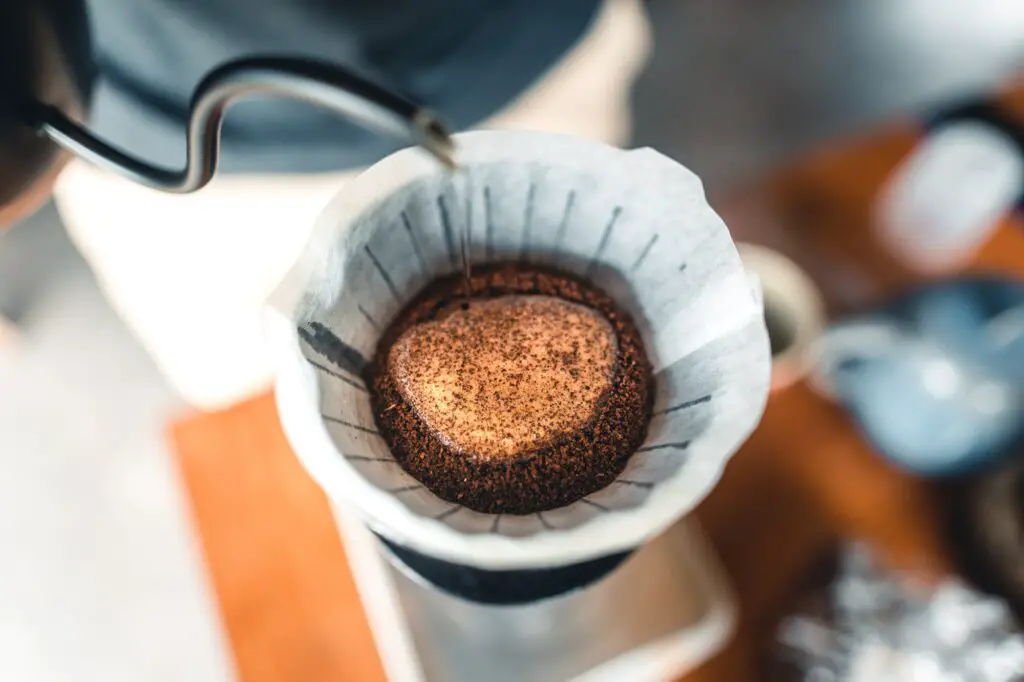
Why Freshness Matters: The Key to Unlocking Flavor
The coffee bloom isn’t just a mesmerizing sight; it’s a sign of freshness that impacts the taste of your brew. The more CO2 trapped in the beans, the fresher they are, and the more prominent the bloom. As coffee beans age, they release CO2, and the flavors become stale.
To put it simply: a beautiful coffee bloom means you’re in for a flavorful, aromatic experience. No bloom? You might be sipping on a sad, lackluster cup of coffee.
The Science of Blooming: A Step-by-Step Guide
Ready to master the art of blooming? Here’s a step-by-step guide to ensure you unlock the full potential of your coffee.
Choose the freshest beans: Look for coffee beans with a roast date no more than two weeks old. Brands like Counter Culture, Blue Bottle, and Stumptown are known for their attention to freshness.
Grind your beans right before brewing: Grinding your beans just before brewing will ensure they maintain their freshness and CO2 content. Make sure to use the perfect grind size for your brewing method.
Heat your water: The ideal temperature for blooming is between 195°F and 205°F. Too hot, and you risk scalding the grounds; too cold, and you won’t extract the flavors properly.
Wet the grounds: Gently pour enough hot water to saturate the coffee grounds evenly. This will release the trapped CO2 and kickstart the blooming process.
Wait: Allow the coffee to bloom for 30 to 45 seconds. This pause gives the coffee grounds time to release their CO2 and prime them for brewing.
Continue brewing: Proceed with your chosen brewing method, whether it’s pour-over, French press, or Aeropress. You’ve now set the stage for a delicious, full-flavored cup of coffee!
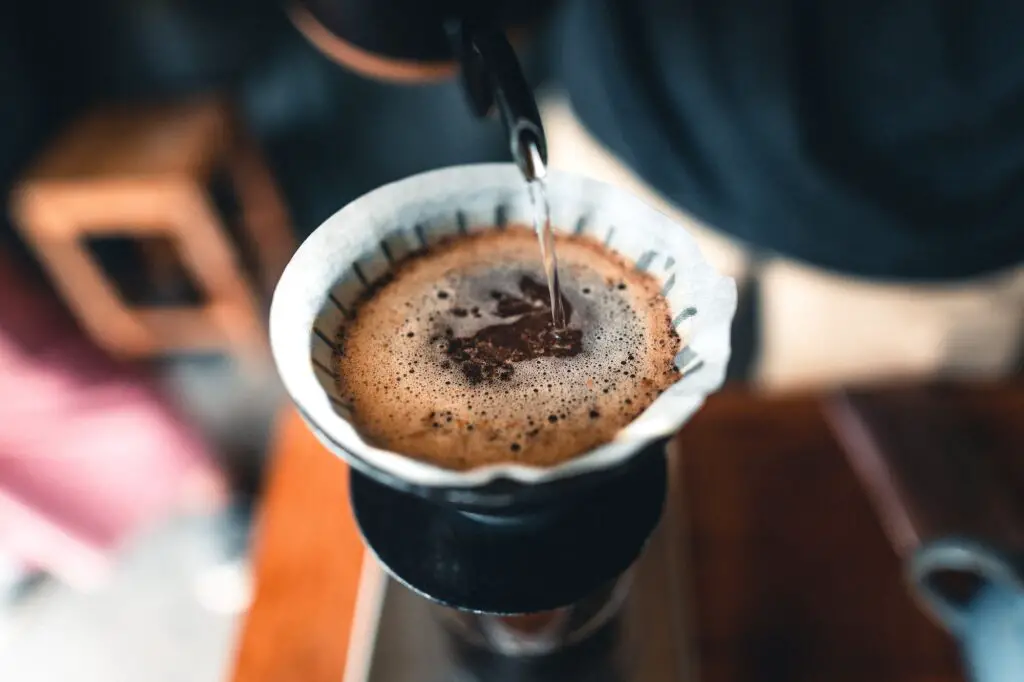
To Bloom or Not to Bloom: Espresso and Other Brewing Methods
When it comes to coffee bloom and espresso, things get a little tricky. Espresso is a fast-paced brewing method that involves forcing hot water through finely ground coffee under high pressure. This process extracts the flavors quickly, but it doesn’t leave much room for a separate blooming step. However, that doesn’t mean blooming is entirely off the table for espresso lovers. Let’s explore the relationship between espresso and coffee bloom, as well as other brewing methods where blooming may not be necessary.
Espresso: A Different Kind of Bloom
Although the traditional blooming process isn’t applicable to espresso, the brewing method itself naturally incorporates a sort of “forced bloom.” When the hot water hits the coffee puck at high pressure, it releases the trapped CO2 rapidly, resulting in a rich, velvety layer of crema on top of the espresso shot. The crema is, in a way, espresso’s version of the coffee bloom.
To ensure a beautiful crema and a well-extracted espresso shot, pay attention to the freshness of your beans, the grind size, and the pressure and temperature of your espresso machine. Investing in one of the best espresso machines of 2023 can help you achieve that perfect shot every time.
Brewing Methods Where Blooming Isn’t Necessary
While blooming is a valuable technique for many manual brewing methods, there are some instances where it’s not necessary or applicable. These include:
- Automatic drip machines: In most cases, drip machines don’t allow for a separate blooming step, as they continuously pour water over the coffee grounds. However, some high-end drip machines include a “pre-infusion” feature that mimics blooming by pausing the water flow briefly after the initial saturation.
- Cold brew: The slow, gentle extraction process of cold brew doesn’t require blooming. However, as mentioned earlier, some enthusiasts still prefer to bloom their coffee before making cold brew for potential flavor enhancement.
- Moka pot: The pressure-driven brewing process of a moka pot doesn’t allow for a separate blooming step. In this case, the extraction process takes care of releasing the trapped CO2.
- Turkish coffee: The unique brewing method of Turkish coffee involves simmering the coffee grounds in water, creating a thick, frothy layer on top. Since the brewing process is so different, blooming isn’t necessary or applicable.
While blooming is a valuable technique for enhancing the flavors and aromas of your coffee, it’s not always necessary or possible with every brewing method. The key is to understand the unique characteristics of each method and adjust your brewing process accordingly to achieve the best results.

FAQ: Blooming Questions, Answered
Can I still bloom my coffee if I use pre-ground beans?
While it’s possible to bloom pre-ground coffee, the results won’t be as impressive. Pre-ground beans lose their freshness and CO2 content faster than whole beans, so the bloom will be less pronounced. For the best results, always grind your beans right before brewing.
Does blooming work with all brewing methods?
Blooming is most effective with manual brewing methods like pour-over, French press, and Aeropress. It’s not as applicable to automatic drip machines or espresso, as the brewing process is different and doesn’t allow for a separate blooming step.
Can I bloom coffee when making cold brew?
Blooming is typically not necessary for cold brew, as the extraction process is much slower and gentler. However, some enthusiasts still prefer to bloom their coffee before making cold brew to release any remaining CO2 and potentially enhance the flavor.
Why does my coffee bloom more on some days and less on others?
There could be several factors affecting the coffee bloom, such as the freshness of the beans, the grind size, the water temperature, and even the brewing method. To ensure a consistent bloom, always use fresh beans, grind them just before brewing, and use the appropriate water temperature.
The Bloom-ing Takeaway
So, there you have it – the magical science of coffee bloom, unlocked! By understanding and mastering the bloom, you’ll be on your way to brewing a fresh, flavorful, and aromatic cup of coffee that’ll make your taste buds dance with joy.
Remember, it’s all about freshness. Choose fresh beans, grind them just before brewing, and let them bloom to unleash the full potential of your coffee. Happy brewing, and may the bloom be ever in your favor!
Daily Demitasse is a participant in the Amazon Services LLC Associates Program, an affiliate advertising program designed to provide a means for sites to earn advertising fees by advertising and linking to Amazon.com. We also participate in other affiliate programs which compensate us for referring traffic.
